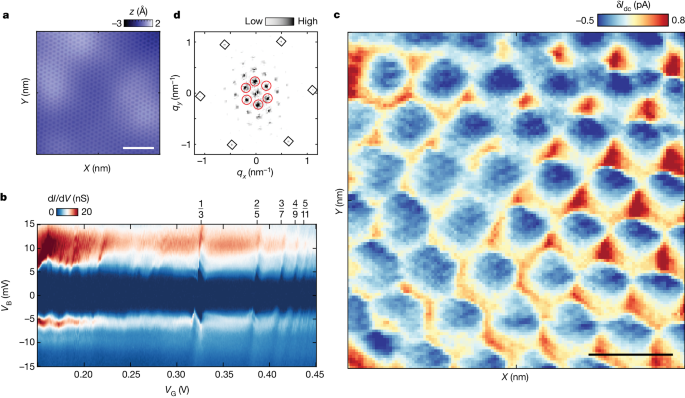It's hard to convince electrons to form a crystal, and even harder to measure this structure.
But in a new study, physicists have now managed to obtain direct images of a "Wigner crystal" for the first time - a structure made entirely of electrons - and these images are the sharpest ever.
The results of the study were presented in an article published in the journal Nature.

"Many articles, literally hundreds, have been written about finding evidence of the Wigner crystal in an indirect way," says Ali Yazdani, a researcher at Princeton University and corresponding author of the study. "And we never thought we'd be able to get images directly. It was a bit ofa fluke."
At room temperature, electrons can flow together in electric currents because their kinetic energy overcomes the force that forces particles with the same electric charge to repel each other.
However, at very low temperatures, the repulsive electrical forces win out and the electrons end up organizing themselves into a uniform grid, i.e. a crystal.
Physicist Eugene Wigner predicted this phenomenon in 1934, but only recently have researchers begun to understand how to create Wigner crystals in the laboratory.
Yazdani and his colleagues created their Wigner crystal from electrons inside two thin sheets of graphene, each just one atom thick.
To reduce the kinetic energy of the electrons, they placed the graphene inside a cold room, which cooled it to just a few hundredths of a degree above absolute zero, and immersed it in a strong magnetic field.
"It was crucial that our graphene had very few imperfections where the electrons could get stuck. Otherwise, the particles could form a crystalline state due to the structure of these imperfections, and not due to interactions between them, as Wigner had predicted," explains Yazdani, quoted by New Scientist.

In previous experiments, researchers looked for signs of a Wigner crystal trying to push electrons to form currents: when the particles failed to flow, researchers could infer that the electrons were trapped in a lattice - indirect evidence of the presence of a Wigner crystal.
But Yazdani's team obtained direct images of their crystal with a special microscope, which used a quantum effect called tunneling.
The method involves passing an extremely sharp metal tip over the surface of the graphene and, when it passes over an electron, the particle tunnels through between the surface and the tip, creating a small electric current.
Thanks to these currents, the researchers knew where and at what density the electrons were positioned inside the graphene, which allowed them to create precise images of a Wigner crystal.
In their images, Ali Yazdani and his colleagues saw the electrons located at the vertices of repeated triangles, just as Wigner had predicted.
In addition, they followed how the crystal's structure changed as factors such as temperature, magnetic field strength and the number of electrons it contained changed, which they could do by applying an electrical voltage to the material.
Under these variable conditions, the crystal "melted" into an exotic and incompressible electron fluid, as well as into a fluid where the electrons formed stripes.
These molten states are what the team intends to visualize next. Some of them are filled with particle-like excitations, similar to electrons, but carrying only a fraction of their charge.
Yazdani now hopes to also obtain images of the crystallization of these excitations.






